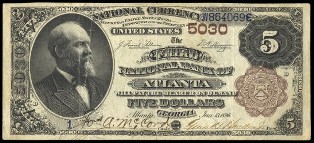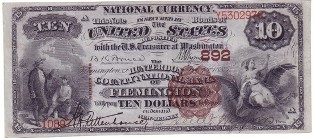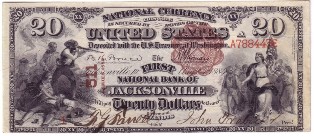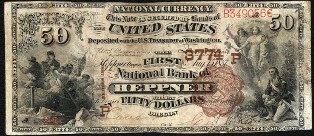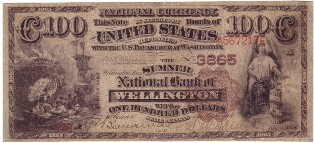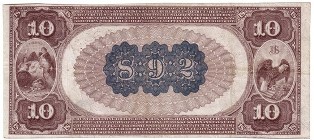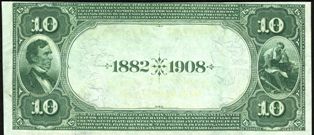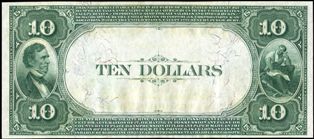National Bank Notes – Values and Pricing Information
Determining national bank note values can be very difficult. National bank notes can be worth as little as a few dollars over face value or as much as five figures. Read the information below and contact us to learn more about national bank note values.
Overview: Between 1863 and 1935 all 50 states and even Puerto Rico issued national bank notes. Any bank that had a national charter had the option of depositing bonds with the federal government. The bonds would then act as collateral for the bank to issue its own bank notes with the bank’s name, town, and officer’s signatures featured on the face of the note. The money was printed in Washington DC at the Bureau of Engraving and Printing. This money was good all across the country and is still legal tender today. More than 12,000 national banks issued bank notes.
Value: When it comes to valuing national bank notes, the old real estate adage comes to mind, “location, location, location.” Consider the following:
-states that had small populations in the late 19th and early 20th century will have had fewer banks. So by that thought, notes from states like Wyoming will generally be worth more than notes from Pennsylvannia
-southern states and western states had less developed economies than the industrial north east or the agricultural midwest, by that rule, notes from less developed states are generally more valuable
-most banks never printed $50 & $100 notes because that was a large sum of money 100 years ago, therefore higher denomination notes are rare in that few were printed and it was costly to save one
However, there are exceptions to every rule. No matter the state or denomination, all national bank notes are very collectible. Thanks to a lot of research, the collecting world has a basic idea of how valuable any note is from any bank.
If you have a note you’d like to find out the value for, simply call or email us: nationals@oldcurrencyvalues.com. It is impossible to list all the national banks and bank values online so direct contact is the absolute best and quickest way to learn more about your note.
The pictures below break down how to identify what nationals you have
1902 “Third Charter Period”
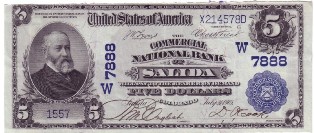 |
 |
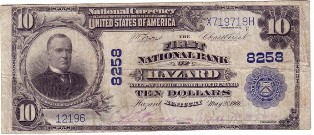 |
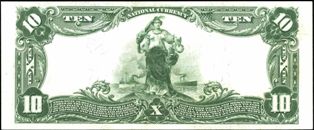 |
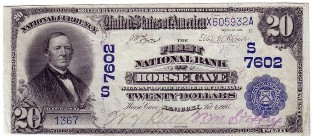 |
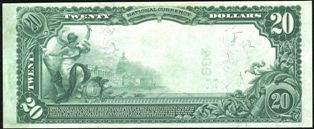 |
 |
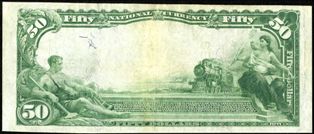 |
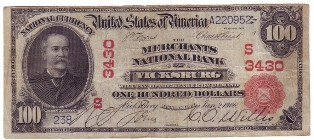 |
 |
The 1902 “third charter period” notes can be broken down into 3 type designs, red seals, date backs, and plain backs. Red seals were the earliest printed and are the most valuable. The date backs were printed second and are usually worth the same as the plain backs, which were the last in the series printed. All of the notes basically look the same, however the differences they have are fairly obvious. Red seals have a red overprint and seal. Date backs possess the years 1902 – 1908 printed on the top center of the reverse, where as the plain backs don’t have the date on the back (see graphic below). Both date backs and plain backs have a blue seal and overprint.
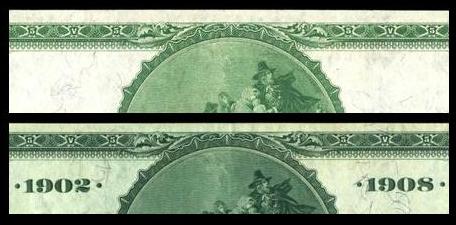
1882 “Second Charter Period”
Just like the 1902 series, the 1882 series is composed of three different types: Brown Backs, Date Backs, and Value Backs. The pictures below show what the backs of each note looks like for a ten dollar note. The pictures should also explain why each note got its name.
|
“”Brown Back” – earliest printed
|
|
“Date Back” – middle
|
|
“Value Back” – latest printed
|

Original & 1875 “First Charter Period”
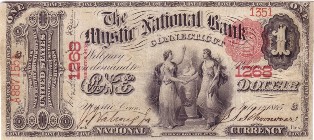 |
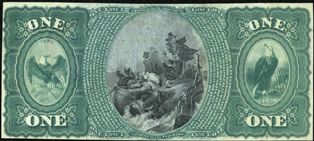 |
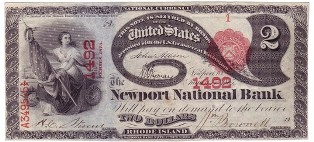 |
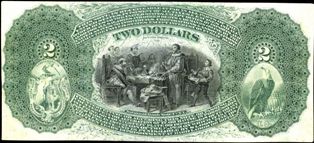 |
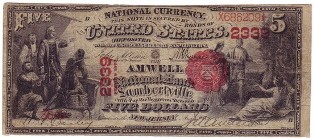 |
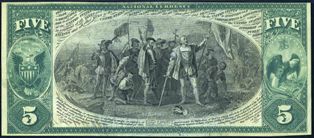 |
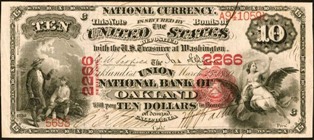 |
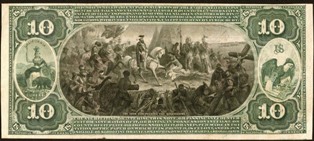 |
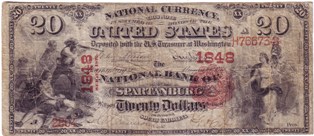 |
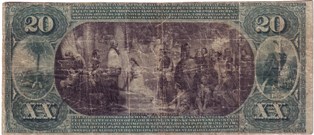 |
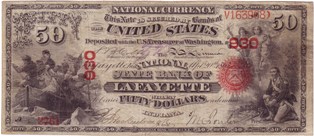 |
 |
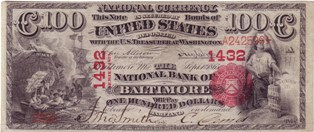 |
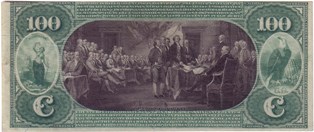 |
As noted, the notes above are referred to as first charter notes. They were the first national bank notes ever issued, as such, they tend to be highly sought after and the most valuable of all national notes. In addition to the 1, 2, 5, 10, 20, 50, and 100 denomination notes featured above, some major metropolitan banks issued 500 and 1000 notes. They are pictured below. If you have one of these, call your lawyer and then call us. They are exceptionally rare.

The first charter notes can be broken down into two varieties, original series and 1875 series. The reverse of the notes are exactly the same. However, the front has two differences. The 1875 series sports that year notation on the front, while the original series has no year notation. Easier to spot though are the seal differences. The original series has a spiked seal and the 1875 notes have the standard rounded treasury seal. (see image below)
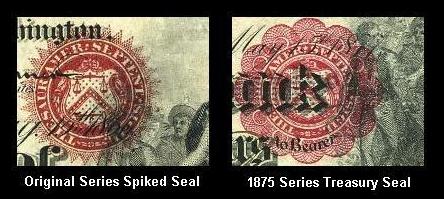
1929 Type I & II National Bank Notes
Toward the end of the national bank note period (1929-1935) banks had to adapt to the new small size currency that began circulating in 1928. Therefore they had to stop printing what we now think of as large size notes. Notes from 1929 will look very similar to standard united states notes which circulated prior to the big head series.

These notes will generally be worth the least of all national bank notes. However, as stated several times previously, there are many exceptions. Please contact us for further pricing.


